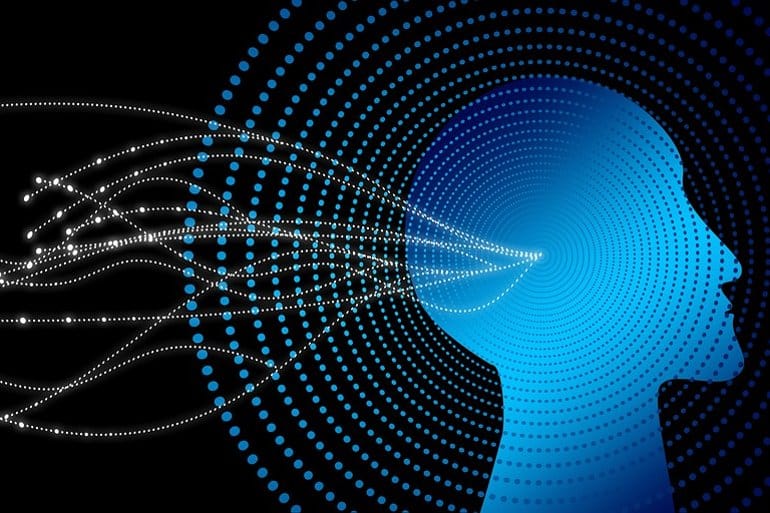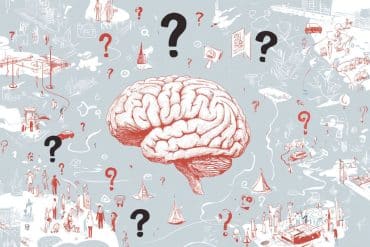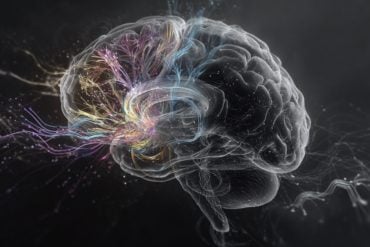Summary: Researchers have identified and mapped regions of the brain associated with fluid memory, or the human ability to solve problems without prior experience.
Source: UCL
A team led by UCL and UCLH researchers have mapped the parts of the brain that support our ability to solve problems without prior experience – otherwise known as fluid intelligence.
Fluid intelligence is arguably the defining feature of human cognition. It predicts educational and professional success, social mobility, health, and longevity. It also correlates with many cognitive abilities such as memory.
Fluid intelligence is thought to be a key feature involved in “active thinking” – a set of complex mental processes such as those involved in abstraction, judgment, attention, strategy generation and inhibition. These skills can all be used in everyday activities – from organising a dinner party to filling out a tax return.
Despite its central role in human behaviour, fluid intelligence remains contentious, with regards to whether it is a single or a cluster of cognitive abilities, and the nature of its relationship with the brain.
To establish which parts of the brain are necessary for a certain ability, researchers must study patients in whom that part is either missing or damaged. Such “lesion-deficit mapping” studies are difficult to conduct owing to the challenge of identifying and testing patients with focal brain injury.
Consequently, previous studies have mainly used functional imaging (fMRI) techniques – which can be misleading.
The new study, led by UCL Queen Square Institute of Neurology and National Hospital for Neurology and Neurosurgery at UCLH researchers and published in Brain, investigated 227 patients who had suffered either a brain tumour or stroke to specific parts of the brain, using the Raven Advanced Progressive Matrices (APM): the best-established test of fluid intelligence.
The test contains multiple choice visual pattern problems of increasing difficulty. Each problem presents an incomplete pattern of geometric figures and requires selection of the missing piece from a set of multiple possible choices.
The researchers then introduced a novel “lesion-deficit mapping” approach to disentangle the intricate anatomical patterns of common forms of brain injury, such as stroke.

Their approach treated the relations between brain regions as a mathematical network whose connections describe the tendency of regions to be affected together, either because of the disease process or in reflection of common cognitive ability.
This enabled researchers to disentangle the brain map of cognitive abilities from the patterns of damage – allowing them to map the different parts of the brain and determine which patients did worse in the fluid intelligence task according to their injuries.
The researchers found that fluid intelligence impaired performance was largely confined to patients with right frontal lesions – rather than a wide set of regions distributed across the brain. Alongside brain tumours and stroke, such damage is often found in patients with a range of other neurological conditions, including traumatic brain injury and dementia.
Lead author, Professor Lisa Cipolotti (UCL Queen Square Institute of Neurology), said: “Our findings indicate for the first time that the right frontal regions of the brain are critical to the high-level functions involved in fluid intelligence, such as problem solving and reasoning.
“This supports the use of APM in a clinical setting, as a way of assessing fluid intelligence and identifying right frontal lobe dysfunction.
“Our approach of combining novel lesion-deficit mapping with detailed investigation of APM performance in a large sample of patients provides crucial information about the neural basis of fluid intelligence. More attention to lesion studies is essential to uncover the relationship between the brain and cognition, which often determines how neurological disorders are treated.”
Funding: The study was funded by Welcome and the NIHR UCLH Biomedical Research Centre funding scheme. Researchers also received funding from The National Brain Appeal and the Guarantors of Brain.
About this intelligence and neuroscience research news
Author: Poppy Danby
Source: UCL
Contact: Poppy Danby – UCL
Image: The image is in the public domain
Original Research: Open access.
“Graph lesion-deficit mapping of fluid intelligence” by Lisa Cipolotti et al. Brain
Abstract
Graph lesion-deficit mapping of fluid intelligence
Fluid intelligence is arguably the defining feature of human cognition. Yet the nature of its relationship with the brain remains a contentious topic.
Influential proposals drawing primarily on functional imaging data have implicated ‘multiple demand’ frontoparietal and more widely distributed cortical networks, but extant lesion-deficit studies with greater causal power are almost all small, methodologically constrained, and inconclusive.
The task demands large samples of patients, comprehensive investigation of performance, fine-grained anatomical mapping, and robust lesion-deficit inference, yet to be brought to bear on it.
We assessed 165 healthy controls and 227 frontal or non-frontal patients with unilateral brain lesions on the best-established test of fluid intelligence, Raven’s Advanced Progressive Matrices, employing an array of lesion-deficit inferential models responsive to the potentially distributed nature of fluid intelligence.
Non-parametric Bayesian stochastic block models were used to reveal the community structure of lesion deficit networks, disentangling functional from confounding pathological distributed effects.
Impaired performance was confined to patients with frontal lesions [F(2,387) = 18.491; P < 0.001; frontal worse than non-frontal and healthy participants P < 0.01, P <0.001], more marked on the right than left [F(4,385) = 12.237; P < 0.001; right worse than left and healthy participants P < 0.01, P < 0.001].
Patients with non-frontal lesions were indistinguishable from controls and showed no modulation by laterality. Neither the presence nor the extent of multiple demand network involvement affected performance. Both conventional network-based statistics and non-parametric Bayesian stochastic block modelling heavily implicated the right frontal lobe.
Crucially, this localization was confirmed on explicitly disentangling functional from pathology-driven effects within a layered stochastic block model, prominently highlighting a right frontal network involving middle and inferior frontal gyrus, pre- and post-central gyri, with a weak contribution from right superior parietal lobule. Similar results were obtained with standard lesion-deficit analyses.
Our study represents the first large-scale investigation of the distributed neural substrates of fluid intelligence in the focally injured brain. Combining novel graph-based lesion-deficit mapping with detailed investigation of cognitive performance in a large sample of patients provides crucial information about the neural basis of intelligence.
Our findings indicate that a set of predominantly right frontal regions, rather than a more widely distributed network, is critical to the high-level functions involved in fluid intelligence. Further they suggest that Raven’s Advanced Progressive Matrices is a useful clinical index of fluid intelligence and a sensitive marker of right frontal lobe dysfunction.







